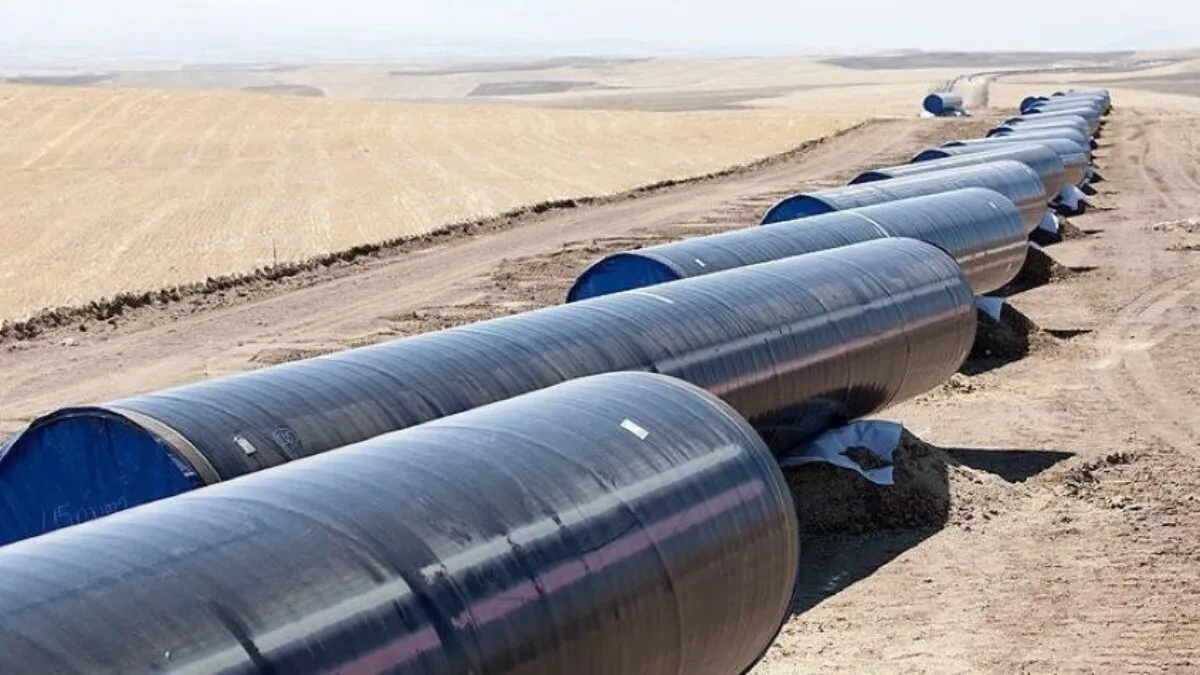A new report by Sauti East Africa—a women-led social enterprise based in Kenya—has highlighted the crucial role that agricultural value chains play in driving East Africa’s economic growth. The study, published on February 20, 2025, at 10:09 am by journalist Madhumita Paul, provides an in-depth look at how micro, small, and medium enterprises (MSMEs) across Kenya, Uganda, Rwanda, and Tanzania contribute to the region’s prosperity. It also underscores the significant participation of women and youth in these value chains, while pointing out that substantial barriers remain. Modernizing agriculture through technology and improving access to credit are identified as key strategies for attracting younger generations to this critical sector.
In this article, we delve into the report’s findings, explore the evolving role of digital technology and financial inclusion, and discuss the broader implications for economic development in East Africa.
The Backbone of East Africa’s Economy: Agricultural Value Chains
Agriculture has long been the cornerstone of East Africa’s economy. The region’s fertile lands, diverse climates, and rich natural resources have supported a wide range of agricultural activities—from the cultivation of staple crops to horticulture and livestock production. However, what is often overlooked is the extensive network of value chains that connects these agricultural activities to markets, both domestic and international.
A Diverse and Integrated Ecosystem
Agricultural value chains in East Africa encompass a broad spectrum of activities that include production, processing, aggregation, transportation, and retail. The Sauti East Africa report, which surveyed over 25,000 MSMEs, reveals that these value chains are not only pivotal in generating income and employment but are also fundamental in stabilizing food supplies and ensuring economic resilience. For instance, approximately 50 percent of the MSMEs surveyed operate within the cereal value chain—a critical sector given the importance of staple food crops in the region’s diet and food security.
Furthermore, about one-third of the MSMEs are involved in the production and distribution of edible vegetables, roots, and tubers. This underscores the role of horticulture and root crops in diversifying the agricultural portfolio, thereby reducing dependency on a single commodity and enhancing nutritional outcomes.
Contribution to Economic Growth and Job Creation
Agricultural value chains are more than just supply networks; they are dynamic engines of economic growth. In East Africa, MSMEs constitute the backbone of these value chains, generating employment for millions and driving local economic activity. By linking smallholder farmers to urban markets, these networks facilitate the flow of goods, services, and capital. This, in turn, contributes significantly to GDP growth, poverty reduction, and social development.
Recent statistics indicate that agriculture accounts for a substantial share of GDP in countries like Kenya and Uganda, and the robust performance of agricultural MSMEs is a key factor in this success. With value chains that span from rural farms to urban centers, the agricultural sector creates a ripple effect, stimulating growth in related sectors such as transportation, retail, and financial services.
Women and Youth: Cornerstones of MSME-Led Value Chains
Youth-Led Enterprises: A Beacon of Innovation
One of the standout findings of the report is the strong presence of youth within agricultural value chains. Approximately 72 percent of MSMEs in the sector are led by individuals aged between 18 and 35. This high level of youth engagement is a promising sign, suggesting that the younger generation is increasingly recognizing the potential for entrepreneurship in agriculture. Youth-led enterprises tend to be more agile and innovative, embracing new technologies and business models that can revolutionize traditional practices.
The involvement of youth is particularly critical as it injects fresh ideas into the sector and drives the adoption of modern farming techniques and digital tools. As global trends increasingly favor technology-driven agriculture, the ability of young entrepreneurs to harness innovation will be essential in keeping East Africa’s agricultural sector competitive on the world stage.
Women Entrepreneurs: Overcoming Structural Barriers
While youth-led MSMEs are booming, the report also highlights a significant gender gap in entrepreneurship. Data from the study shows that older MSMEs are 41 percent more likely to be led by women compared to their younger counterparts. This disparity is often attributed to the disproportionate domestic and childcare responsibilities that younger women face, which can delay their entry into entrepreneurship.
Despite these challenges, women continue to play a vital role in agricultural value chains. Recognizing this, various initiatives have been launched to empower women and enhance their access to finance, training, and markets. Programs like Women4Growth, supported by development finance institutions, are designed to provide leadership and inclusion training, thereby helping women overcome barriers to entry and scale their businesses.
Empowering women is not only a matter of equity but also an economic imperative. Research has consistently shown that women reinvest a significant portion of their income back into their families and communities, leading to improved health, education, and overall quality of life. As such, fostering women’s entrepreneurship in agriculture can yield broad social and economic benefits.
Digital Transformation: Revolutionizing Agricultural Value Chains
The Rise of Mobile Technology and Digital Platforms
Digital technology is rapidly transforming agricultural value chains across East Africa. According to the report, around 44 percent of MSMEs in the region already own smartphones, which has facilitated their access to mobile banking services, productivity applications, and e-commerce platforms. This digital penetration is a game-changer, as it enables businesses to streamline operations, access real-time market information, and enhance overall efficiency.
Platforms like M-Kulima and M-Pesa have been at the forefront of this digital revolution. M-Kulima, for instance, provides farmers with digital extension services, connects them to input suppliers, and offers market linkage services that help them secure better prices for their produce. Similarly, M-Pesa has revolutionized financial transactions by enabling secure, convenient mobile money transfers, thereby expanding financial inclusion in regions where traditional banking infrastructure is lacking.
Enhancing Credit Access and Financial Inclusion
One of the persistent challenges for agricultural MSMEs is access to long-term finance. Many small and medium enterprises struggle to secure affordable credit, which limits their ability to invest in modern technologies and scale their operations. The report highlights that improved credit access is essential for modernizing agriculture and attracting younger generations to the sector.
Financial institutions, in collaboration with governments and development partners, are increasingly focusing on innovative credit solutions tailored for the agricultural sector. These include digital lending platforms that use alternative data to assess creditworthiness, mobile-based loan applications, and flexible repayment models designed to align with the seasonal nature of agricultural income. By leveraging technology, these solutions are making credit more accessible and affordable, thereby empowering MSMEs to invest in productivity-enhancing technologies and expand their operations.
The Impact of Digitalization on Efficiency and Productivity
Digitalization offers significant potential for boosting the efficiency and productivity of agricultural value chains. By adopting digital tools, MSMEs can optimize supply chain management, reduce post-harvest losses, and improve the overall quality of agricultural products. For example, the use of data analytics enables farmers and traders to forecast demand, manage inventories, and reduce wastage. Similarly, digital traceability systems help ensure food safety and quality by tracking products from farm to fork, which is increasingly important in global export markets.
Moreover, digital platforms facilitate greater transparency in transactions, reducing corruption and enhancing trust among stakeholders. This increased transparency is particularly beneficial for smallholder farmers, who often face exploitation by middlemen. By accessing market information directly through digital tools, farmers can negotiate better terms and secure higher returns on their produce.
Challenges and Barriers to Growth
Structural and Infrastructural Constraints
Despite the significant progress made in modernizing agricultural value chains, several challenges remain. Structural barriers, such as inadequate infrastructure and limited access to markets, continue to hinder the growth of MSMEs. Many rural areas still lack reliable transportation networks, storage facilities, and cold chains, which are essential for preserving the quality of perishable goods. Without these critical infrastructures, even the most innovative digital solutions may fall short of their potential.
Policy and Regulatory Hurdles
Policy and regulatory challenges also pose significant obstacles. While many East African governments have introduced policies aimed at promoting agricultural modernization and financial inclusion, the implementation of these policies is often inconsistent. Regulatory frameworks can be complex and fragmented, making it difficult for MSMEs to navigate the bureaucratic landscape. In some cases, policies that are designed to support growth may inadvertently create additional burdens, such as excessive documentation requirements or high compliance costs.
Socio-Cultural Barriers and Gender Inequality
Socio-cultural factors, particularly those related to gender roles, further complicate the landscape. As noted in the report, younger women face additional challenges in entering and succeeding in entrepreneurship due to domestic responsibilities and societal expectations. Overcoming these barriers requires not only policy intervention but also a cultural shift that recognizes and values the contributions of women in all sectors of the economy.
Government and Donor Initiatives: Catalyzing Change
Regional Integration and Policy Support
Recognizing the critical role of agriculture in economic development, governments in East Africa are increasingly prioritizing the modernization of agricultural value chains. Regional initiatives, such as the East African Community (EAC) policy frameworks, aim to harmonize trade regulations, improve infrastructure, and foster cross-border collaboration. These initiatives are essential for creating a conducive environment where MSMEs can thrive and contribute to broader economic growth.
For instance, governments are investing in rural road construction, improving irrigation systems, and building modern storage facilities. Such infrastructure projects are vital for reducing post-harvest losses and ensuring that agricultural produce reaches markets in optimal condition. Additionally, policy reforms aimed at streamlining business registration and reducing bureaucratic hurdles can significantly enhance the ease of doing business for MSMEs.
Donor Funding and Public-Private Partnerships
International donors and development agencies also play a pivotal role in supporting the modernization of agricultural value chains. Organizations such as the World Bank, the African Development Bank (AfDB), and various United Nations agencies have launched numerous initiatives focused on rural development, digital transformation, and financial inclusion. These initiatives often involve significant funding, technical assistance, and capacity-building programs designed to empower local entrepreneurs.
Public-private partnerships (PPPs) are emerging as an effective model for catalyzing change in the agricultural sector. By leveraging the strengths of both the public and private sectors, PPPs can mobilize resources, drive innovation, and ensure that benefits are widely distributed. For example, partnerships that integrate financial institutions with technology providers have led to the development of digital lending platforms tailored for smallholder farmers. Such collaborations not only improve access to credit but also promote sustainable agricultural practices through the adoption of climate-smart technologies.
Education and Capacity Building
Education and capacity-building initiatives are central to empowering MSMEs and ensuring the long-term sustainability of agricultural value chains. Training programs that focus on modern farming techniques, business management, and digital literacy are essential for equipping entrepreneurs with the skills needed to compete in a rapidly evolving market. Many NGOs and private sector players are now offering training workshops, mentorship programs, and online courses to support these efforts.
A notable example is the collaboration between local universities, government agencies, and private companies to establish agricultural innovation hubs. These hubs provide platforms for research, experimentation, and the dissemination of best practices. By fostering a culture of continuous learning and innovation, these initiatives help create a dynamic ecosystem where new ideas can flourish and contribute to overall economic growth.
Regional Success Stories and Best Practices
Case Study: Kenya’s Digital Agri-Revolution
Kenya has emerged as a regional leader in the adoption of digital technologies in agriculture. With platforms like M-Kulima and the widespread use of M-Pesa, Kenyan farmers have gained unprecedented access to market information, financial services, and digital extension support. This digital agri-revolution has not only boosted productivity but has also enabled farmers to negotiate better prices for their produce and expand their market reach.
Success stories from Kenya offer valuable lessons for other East African nations. For example, innovative start-ups are developing mobile applications that provide weather forecasts, pest control advice, and real-time price comparisons. These solutions are helping to reduce the risks associated with farming and making agriculture more appealing to younger generations, who are more likely to embrace technology.
Case Study: Tanzania’s Integrated Value Chain Initiatives
Tanzania has also made significant strides in modernizing its agricultural value chains. Government-led initiatives, in collaboration with international donors, have focused on building modern storage facilities, improving rural infrastructure, and expanding access to credit for smallholder farmers. These efforts have resulted in increased agricultural productivity and improved food security, while also creating new opportunities for MSMEs across the value chain.
Tanzania’s integrated approach—combining infrastructure development, policy reform, and digital transformation—serves as a model for other countries in the region. By addressing multiple bottlenecks simultaneously, Tanzania is paving the way for a more resilient and inclusive agricultural sector that can better support economic growth and poverty reduction.
The Future of East Africa’s Agricultural Value Chains
Embracing Technological Innovation
Looking ahead, the future of agricultural value chains in East Africa hinges on the continued adoption of innovative technologies. Emerging technologies such as artificial intelligence, blockchain, and the Internet of Things (IoT) hold immense potential for further enhancing the efficiency, transparency, and sustainability of agricultural operations. AI-driven analytics can optimize planting schedules and resource allocation, while blockchain technology can ensure traceability and improve trust among supply chain participants.
Moreover, integrating IoT devices into farming practices can provide real-time data on soil moisture, weather conditions, and crop health. Such data-driven approaches enable farmers to make more informed decisions, reducing waste and increasing yields. As these technologies become more accessible and affordable, they are likely to play an increasingly central role in transforming East Africa’s agricultural landscape.
Addressing Climate Change and Promoting Sustainability
Climate change remains one of the most pressing challenges facing agriculture worldwide, and East Africa is no exception. Erratic weather patterns, prolonged droughts, and unpredictable rainfall can severely impact agricultural productivity. In response, there is a growing emphasis on climate-smart agriculture—a set of practices designed to increase productivity while reducing greenhouse gas emissions and enhancing resilience to climate change.
Sustainable practices such as conservation agriculture, agroforestry, and organic farming are being promoted to help farmers adapt to changing climatic conditions. The integration of renewable energy solutions, such as solar-powered irrigation systems, is also gaining traction. By investing in sustainability, East African nations can not only safeguard their agricultural productivity but also contribute to global efforts to combat climate change.
Enhancing Access to Finance and Market Integration
Financial inclusion remains a cornerstone of modernizing agricultural value chains. The ongoing efforts to expand access to credit, particularly through digital lending platforms, are expected to yield significant dividends. Improved credit access enables farmers and MSMEs to invest in modern equipment, high-quality inputs, and technology solutions that boost productivity and efficiency.
Furthermore, deeper market integration—both within the region and with global markets—will be essential for sustaining growth. Trade facilitation measures, improved logistics, and regional harmonization of standards can help East African agricultural products compete more effectively on the international stage. As infrastructure improves and trade barriers are reduced, the region’s agricultural exports are poised to grow, contributing further to economic development.
Conclusion: A Promising Horizon for East Africa
The Sauti East Africa report paints an encouraging picture of the region’s agricultural value chains. MSMEs are not only driving economic growth and job creation but are also transforming the traditional agricultural landscape through digital innovation and modern practices. Women and youth, despite facing unique challenges, are emerging as key players in this dynamic ecosystem. Their increasing participation signals a shift towards a more inclusive and diversified agricultural sector—one that holds the promise of sustainable development and shared prosperity.
Government initiatives, donor funding, and public-private partnerships are collectively addressing long-standing structural barriers. Efforts to modernize infrastructure, enhance financial inclusion, and embrace digital technologies are creating an environment where agricultural value chains can thrive. Meanwhile, success stories from Kenya, Tanzania, and other East African nations provide a blueprint for scaling up these interventions across the region.
As East Africa continues to grapple with global challenges such as climate change and market volatility, the strategic modernization of agricultural value chains emerges as a vital component of economic resilience. By harnessing technology, fostering innovation, and empowering the region’s most vulnerable groups, East Africa is poised to secure its place as a major player in the global agricultural arena.
The future of East Africa’s agricultural sector lies in its ability to adapt and evolve. With the continued support of government policies, international partnerships, and entrepreneurial drive, the region can overcome its challenges and unlock new opportunities. For policymakers, investors, and stakeholders, the message is clear: investing in agricultural value chains is not only a pathway to economic growth but also a critical strategy for sustainable development in an increasingly interconnected world.
In summary, the report on agricultural value chains reaffirms the importance of MSMEs, the pivotal roles of women and youth, and the transformative power of digital technology in shaping East Africa’s economic future. As the region embraces modern farming techniques and innovative business models, it sets the stage for a more resilient, inclusive, and prosperous future—a future where agriculture is not merely a way of life but a dynamic engine of growth and development for generations to come.
Ready to take your career to the next level? Join our dynamic courses: ACCA, HESI A2, ATI TEAS 7 , HESI EXIT , NCLEX – RN and NCLEX – PN, Financial Literacy!🌟 Dive into a world of opportunities and empower yourself for success. Explore more at Serrari Ed and start your exciting journey today! ✨
photo source: Google
By: Montel Kamau
Serrari Financial Analyst
20th February, 2025
Article, Financial and News Disclaimer
The Value of a Financial Advisor
While this article offers valuable insights, it is essential to recognize that personal finance can be highly complex and unique to each individual. A financial advisor provides professional expertise and personalized guidance to help you make well-informed decisions tailored to your specific circumstances and goals.
Beyond offering knowledge, a financial advisor serves as a trusted partner to help you stay disciplined, avoid common pitfalls, and remain focused on your long-term objectives. Their perspective and experience can complement your own efforts, enhancing your financial well-being and ensuring a more confident approach to managing your finances.
Disclaimer: This article is for informational purposes only and does not constitute financial advice. Readers are encouraged to consult a licensed financial advisor to obtain guidance specific to their financial situation.
Article and News Disclaimer
The information provided on www.serrarigroup.com is for general informational purposes only. While we strive to keep the information up to date and accurate, we make no representations or warranties of any kind, express or implied, about the completeness, accuracy, reliability, suitability, or availability with respect to the website or the information, products, services, or related graphics contained on the website for any purpose. Any reliance you place on such information is therefore strictly at your own risk.
www.serrarigroup.com is not responsible for any errors or omissions, or for the results obtained from the use of this information. All information on the website is provided on an as-is basis, with no guarantee of completeness, accuracy, timeliness, or of the results obtained from the use of this information, and without warranty of any kind, express or implied, including but not limited to warranties of performance, merchantability, and fitness for a particular purpose.
In no event will www.serrarigroup.com be liable to you or anyone else for any decision made or action taken in reliance on the information provided on the website or for any consequential, special, or similar damages, even if advised of the possibility of such damages.
The articles, news, and information presented on www.serrarigroup.com reflect the opinions of the respective authors and contributors and do not necessarily represent the views of the website or its management. Any views or opinions expressed are solely those of the individual authors and do not represent the website's views or opinions as a whole.
The content on www.serrarigroup.com may include links to external websites, which are provided for convenience and informational purposes only. We have no control over the nature, content, and availability of those sites. The inclusion of any links does not necessarily imply a recommendation or endorsement of the views expressed within them.
Every effort is made to keep the website up and running smoothly. However, www.serrarigroup.com takes no responsibility for, and will not be liable for, the website being temporarily unavailable due to technical issues beyond our control.
Please note that laws, regulations, and information can change rapidly, and we advise you to conduct further research and seek professional advice when necessary.
By using www.serrarigroup.com, you agree to this disclaimer and its terms. If you do not agree with this disclaimer, please do not use the website.
www.serrarigroup.com, reserves the right to update, modify, or remove any part of this disclaimer without prior notice. It is your responsibility to review this disclaimer periodically for changes.
Serrari Group 2025












